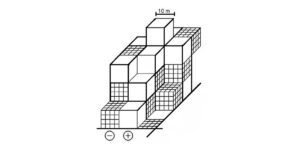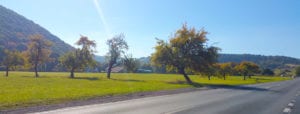We live in a polar world. All life takes place according to the hermetic laws of polarity, or ying and yang. Thus, there are also so-called ray seekers and ray escapees in flora and fauna.
Cats, for example, are radiation seekers. So are many insects like bees or ants. Humans, on the other hand, are radiation seekers, just like cows, dogs, sheep and horses. So if a cat is looking for its “good spot”, it is most likely on an interference zone. Radiation seekers are not only resistant to this radiation, but even utilize it and “refuel” themselves there. However, if a radiation seeker like a human being stays on one of these zones for a longer time, in most cases it draws energy from him, because from then on his organism tries to ward off or compensate the radiation which is harmful for him.
Before industrialized agribusiness displaced peasant farming, it was the rule that before a new barn was built, an anthill or beehive was moved to the potential building site. If the insects then remained at the site, it was unsuitable as a building site, because it was known from experience that the cows would not give milk here and would fall ill.
Another way of doing the same test was to lead a flock of sheep to graze on the site. If the sheep continued to graze calmly, it was known that there were no disturbance zones here and construction could begin. It also becomes interesting when you take a closer look at traditional sayings. The stork, for example, is, like the human being, a radiation fugitive. Accordingly, in houses on which the stork felt comfortable, there was abundant child blessing. This is the background of the saying that the stork brings babies.
It is the same with plants. Who doesn’t know the old saying when it thunderstorms: “You shall seek beech trees, you shall give way to oak trees, and you shall find linden trees”? Whereas beeches and lime trees are ray seekers, oaks are ray seekers. The so-called “weather oak” prefers to stand on water vein crossings and is considered a “lightning magnet” in the traditional vernacular. This is due to the fact that ionized negatively charged energy attracts the positively charged lightning. In the past, dowsing rods were made of willow branches. Therefore, it is not surprising that willows also belong to the radiation seekers. But this is not quite correct, because willows also react to some zones with flight.
When walking through the forest, one occasionally sees trees that are strongly twisted or covered with moss. Mostly these are radiation fugitives, which try to avoid the radiation that is harmful for them. An apple tree, for example, standing on a water vein will probably produce no or less fruit and avoid the interference zone. An elder, on the other hand, feels perfectly at home there. Likewise the hazelnut.
As a rule, most flowers, vegetables, fruits and cereals are radiation fugitives. Flowers and plants usually bloom longer and more intensively on low-radiation zones. Vegetables, fruits and grains can have a higher nutritional value and stay longer. A pantry should not be contaminated with earth rays for this reason. “Medicinal plants” and herbs, however, are often radiation seekers!
Radiation seekers – animals:
cats, bees, ants, wasps, hornets, snakes, owls, moles, beavers
Radiation seekers – plants:
Oaks, willows, firs, ivy, elder, hazelnut, hawthorn, peach, fir, mushrooms, lavender, parsley, marigold, lime tree, yucca palm, cherry tree, spruce, water lily, mistletoe, beans, maple, nettle, weeping willow, larch, apricot, tomato, poppy, thyme, mint, rhododendron, blackberry, raspberry
Radiance fugitives – animals:
cows, deer, dogs, sheep, storks, foxes, goats, guinea pigs, swallows, badgers, chickens, pigeons, horses.
Radiance – plants:
pear, currant, violet, birch, lime, kohlrabi, rose, apple, lilac, gooseberry, potato, hemp, cactus, celery, carrot, thyme, cucumber, banana

















































